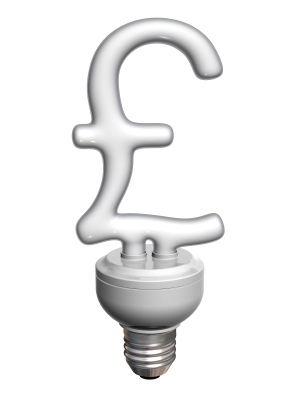Save money by using energy more efficiently
Introduction
Saving energy doesn’t need to involve expensive new equipment – it’s often about changes in behaviour and using existing equipment more efficiently.
This guide has advice on assessing your energy use – with simple steps you can take to start saving money. This includes tips on creating a more energy efficient working culture. You’ll also get specific guidance for different types of industries, details of tax breaks and find out where to go for more help.
Simple ways to save energy
Saving energy is one of the easiest ways for you to cut costs. Even making small changes to the way that your business uses energy can mean big savings.
To understand how much energy your business is using and where the biggest savings could be made, you should take regular meter readings. See the page in this guide on how to monitor your energy use.
To help you start saving money, here are our top tips for no and low cost measures which are easy to carry out, with links to further support.
Involve your staff. The most effective energy saving programmes involve everybody within a business. Savings of 5 to 10 per cent are common – often through employees suggesting and implementing the measures detailed below. Find advice on creating an energy awareness campaign on the Carbon Trust website (registration required).
Control your heating. Try to reduce heating temperatures in the winter by one degree, as this can cut your heating bill by up to 8 per cent. Conversely, in summer, increase the set point for your air conditioning. Ensure that thermostats are accurate by positioning them away from draughts and direct sunlight. For more advice, read about heating, ventilation and air conditioning technology on the Carbon Trust website (registration required).
Avoid wasting heat. Keep doors and windows closed when heating or air conditioning is running. Fitting draught excluders and making sure your premises are well insulated should be very cost effective, with short payback times. The Carbon Trust’s guides CTL062, CTL063 and CTL064 contain further information on draft-proofing and insulation. You can search for Carbon Trust energy-saving publications on the Carbon Trust website.
Minimise artificial lighting. By keeping windows and skylights clean, you can cut the amount you spend on lighting. If you are only working in one part of a room, isolate the lights to that area only. Make sure switches are labeled so staff only turn on the lights they need. You could also consider installing presence and daylight sensors to turn the lights on and off automatically. Find advice and video clips on lighting-related energy saving measures on the Carbon Trust website.
Switch off office equipment. A single computer and monitor left on 24 hours a day can cost over £50 a year. Switching it off out of hours and enabling standby features can reduce this to £15 a year. You could also fit seven-day timers to ensure equipment like printers, copiers and water chillers are turned off overnight and at weekends. Find energy saving advice for office equipment on the Carbon Trust website.
Compress your air costs. Compressed air is often generated at maximum pressure. Reducing pressure by 10 per cent can lead to 5 per cent savings in energy. Make small, incremental reductions, checking that operations aren’t affected. Also, regularly test for and fix leaks – even a tiny leak could cost you more than £700 a year in wasted energy. Find guidance on how to save energy when working with compressed air on the Carbon Trust website.
Don’t forget about motors. Because motors are hidden within machinery, they are often forgotten and left running when not in use. Save energy by identifying and turning off motors during breaks or job changes. To make further savings, motors driving pumps and fans can often be controlled with ‘variable speed drives’. Read advice and watch videos on how to work with motors and drives more efficiently on the Carbon Trust website.
Shut the cold room door. On average, it will cost you £4 every hour a freezer door stays open. For refrigerated cabinets, consider fitting low cost PVC curtains or night blinds. Read guidance on reducing your refrigeration costs on the Carbon Trust website.
Maintain your equipment. One common factor across all the measures above is the need to maintain your equipment to make sure it’s operating efficiently. This can range from cleaning light fittings and windows, to keeping ventilation and compressed air filters clean, to checking door seals and repairing holes and leaks.
Measure your savings. Make sure you read your meters regularly. This will enable you to identify how your company is using energy and where it’s being wasted. For more on this, see the page in this guide on how to monitor your energy use.
Read more: nibusinessinfo.co.uk




